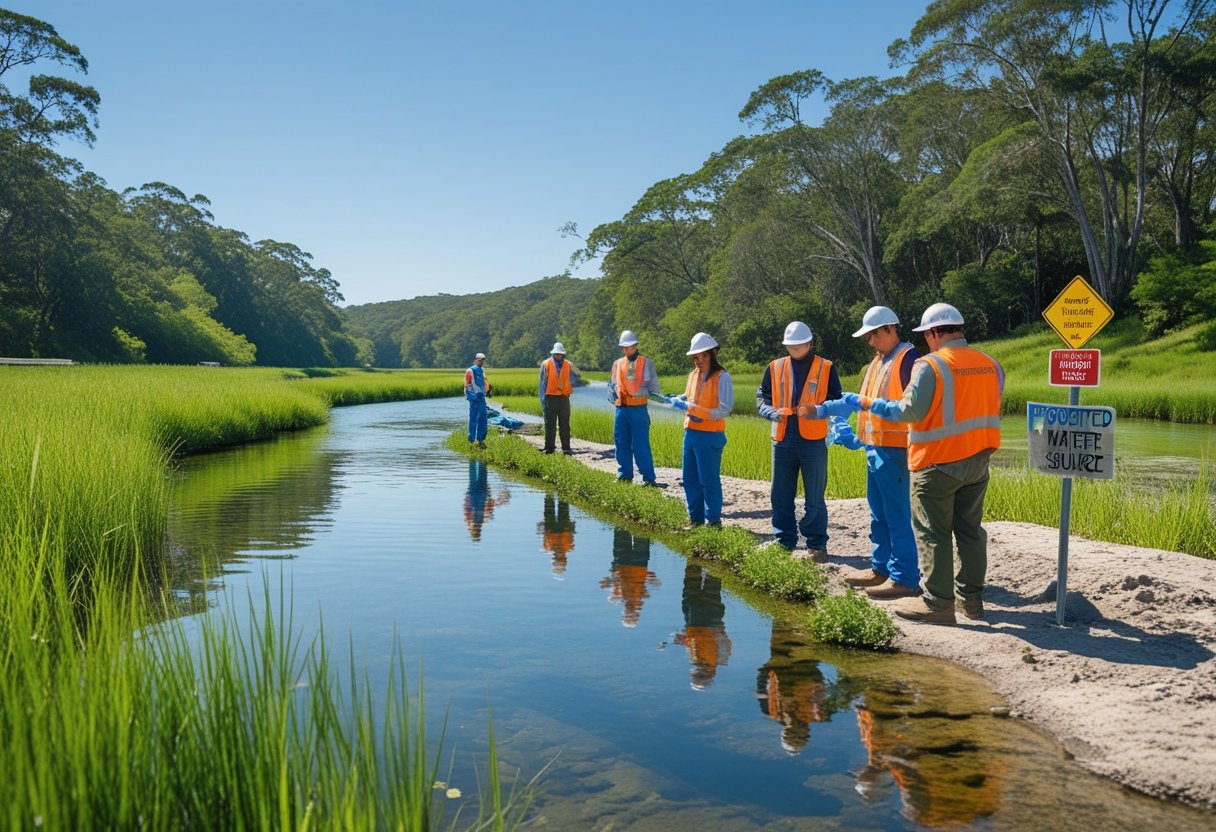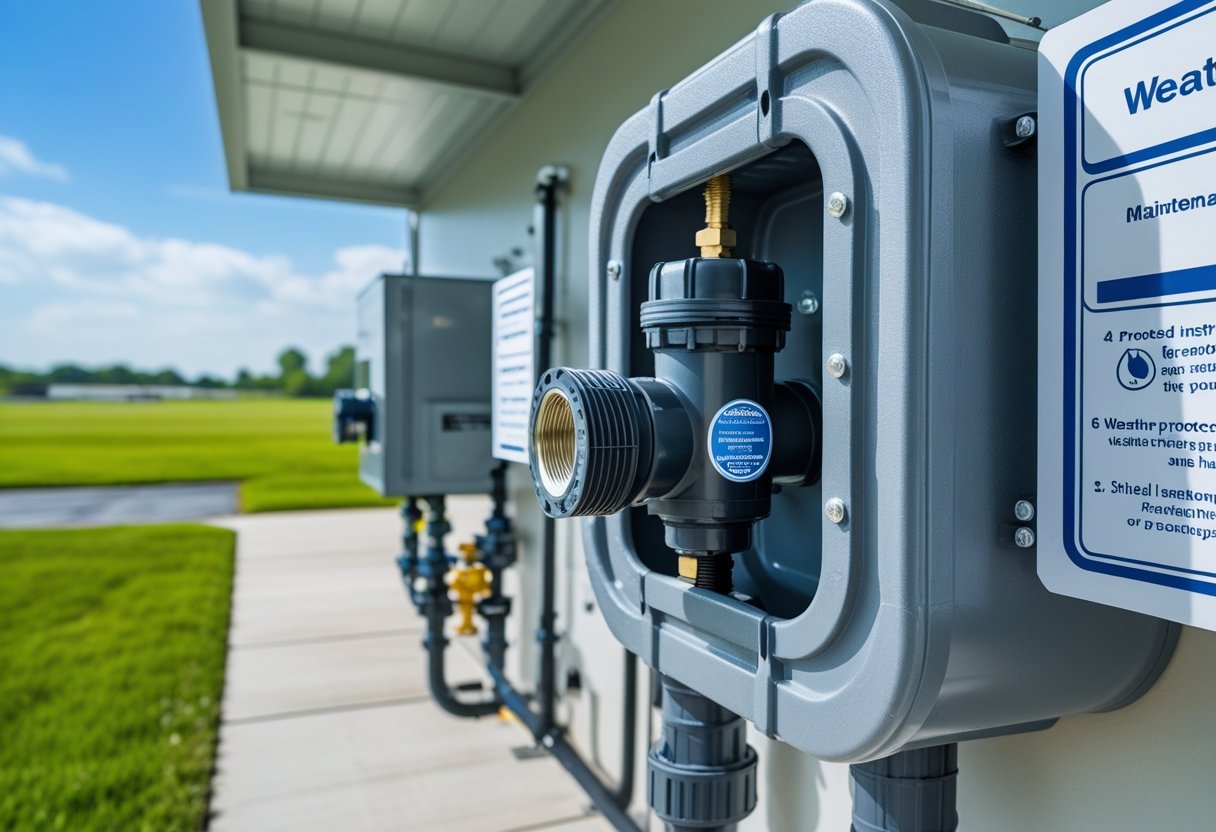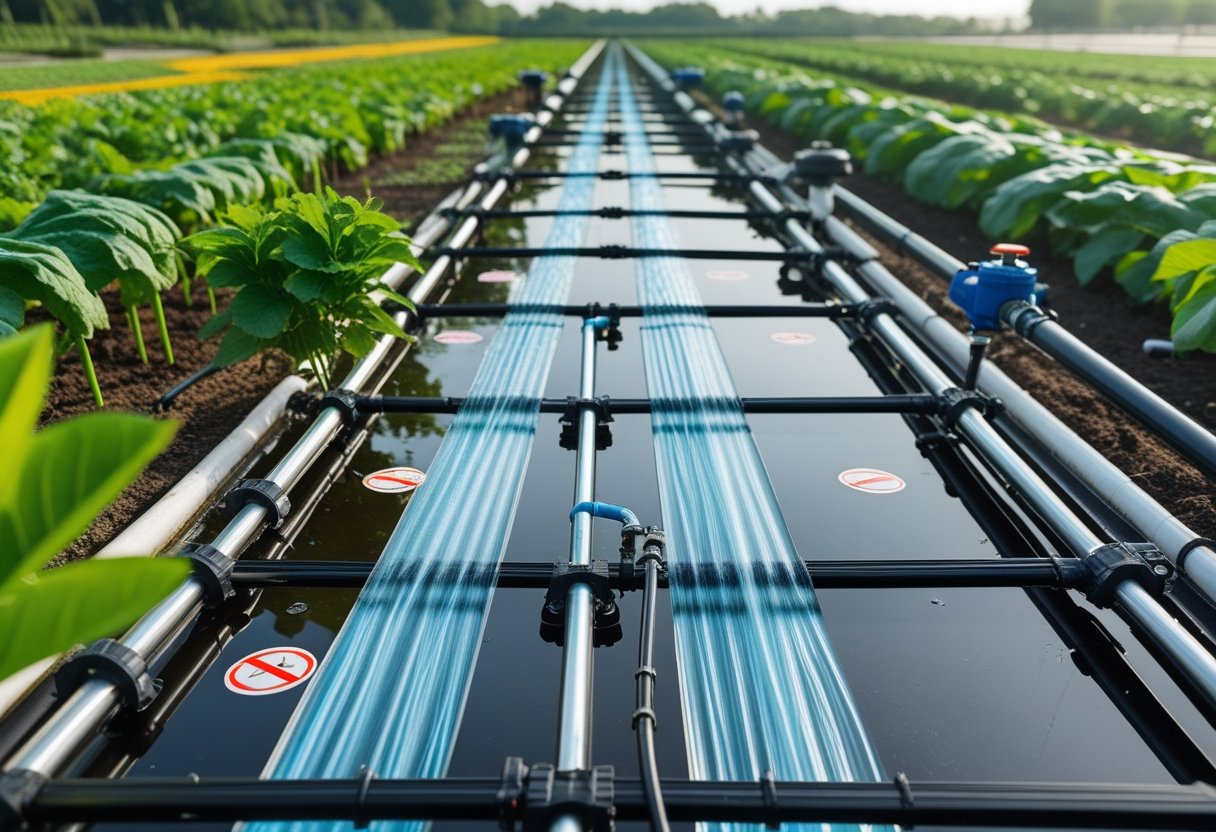Understanding backflow prevention is important for homeowners and businesses alike. It helps protect public health and keeps water systems working properly.
We rely on clean, safe water every day, but without proper safeguards, our potable water can become contaminated. Backflow preventers are devices that stop water from flowing backward in pipes, keeping your drinking water safe from pollutants.
Backflow can happen when water pressure changes in the plumbing system. This can allow dirty water to mix with clean water, causing health risks. There are different types of backflow preventers, like double-check valves and reduced pressure devices. Each type works best for specific situations.
In this post, we'll explore how backflow happens, why it's a problem, and what you can do to prevent it.
The entire article will be developed through the following topics:
- What is backflow?
- Backflow prevention methods
- Installation and maintenance of backflow preventers
- Backflow concerns in specific environments
Let's dive in!
What is backflow?
Backflow is a serious issue that can contaminate your drinking water supply. Therefore, you need to know what causes it and the different types that can occur to protect your water system.
Causes of backflow
Backflow happens when water flows in the opposite direction than intended. This can occur due to changes in water pressure.
Common causes include:
- Broken water mains
- Fire hydrant use
- Heavy water demand
- Frozen pipes
When pressure drops, contaminated water can be pulled back into clean water lines. This creates a cross-connection between safe and unsafe water sources. Faulty plumbing or improper connections also lead to backflow. Hoses left in puddles or chemical tanks are prime culprits, even a garden hose can cause problems if left submerged.
Types of backflow: Back pressure and back Siphonage
There are two main types of backflow: back pressure and back siphonage.
Back pressure occurs when downstream pressure exceeds supply pressure. This can push contaminated water back into the main supply. It's common in systems with pumps, elevated tanks, or boilers.
Back-siphonage happens when negative pressure creates a vacuum in the supply line. This can suck contaminants in through a cross-connection. It's often caused by water main breaks, fire fighting activities, or high water use in tall buildings
Both types can introduce harmful substances into your drinking water. That's why proper backflow prevention devices are so important for water safety.
Backflow prevention methods
Backflow preventers use different methods to stop contaminated water from flowing back into clean water supplies. These devices and techniques keep drinking water safe and protect plumbing systems.
Mechanical devices: Check valves and double-check valves
Check valves are simple but effective backflow preventers, only allowing water to flow in one direction. When water tries to go backward, the valve closes to block it.
Double-check valves offer extra protection. They have two check valves in a row. If one fails, the second one still stops backflow. These are common in underground sprinkler systems. Double-check valves work well for low-risk situations, as they're easy to test and maintain. Many cities require them for home irrigation systems.
Air gap and air inlet valve
An air gap is the simplest backflow prevention method. It's a physical space between a water outlet and any possible contamination source. For example, the gap between a faucet and the top of a sink prevents dirty sink water from flowing back into the faucet.
Air inlet valves are used in pressure vacuum breakers, and when water pressure drops, the valve opens to let air in. This breaks the vacuum and stops backflow. These methods are very reliable, and they're often used in plumbing fixtures and some irrigation systems.
Reduced pressure zones and assemblies
Reduced pressure zone (RPZ) devices offer the highest level of backflow protection. They have two check valves and a pressure-sensitive relief valve. If backflow starts, the relief valve opens. This releases water and keeps the clean water supply safe.
RPZs are complex and need regular testing, but they work for both back-siphonage and backpressure. They're used in high-risk areas like hospitals and chemical plants. These devices are more expensive than other options. But they provide the best protection against serious contamination risks.
Installation and maintenance of backflow preventers
Proper installation and upkeep of backflow preventers are key to keeping water systems safe. These devices need expert setup and regular care to work well.
Professional installation by licensed plumbers
Always hire a licensed plumber to install backflow preventers as they know the correct way to set them up and follow local rules. They’ll pick the best spot and ensure the device fits well with your pipes.
Licensed plumbers also check that the one-way valve works right. This valve stops dirty water from going back into clean water lines. Professionals also use the right tools and parts for a safe setup, then test the device after installing it to ensure it works.
Routine backflow testing and inspection
Backflow preventers need yearly checks to stay safe and legal. We set up tests with certified testers who know how to check these devices. They’ll look for wear, damage, or problems that could let dirty water flow back.
Testers use special tools to check if the valves close tight and also ensure the device can handle changes in water pressure. After testing, we get a report that shows if the device passed or needs fixes.
Maintenance requirements and recommendations
Backflow preventer maintenance involves cleaning them and fixing any parts that wear out. We look for leaks, rust, or cracks that could cause problems. Always keep the area around the device clear, as this makes it easy to get to for checks and fixes. In colder places, we’ll protect outdoor devices from freezing. We also teach building owners how to spot signs of trouble to identify issues early.
Backflow concerns in specific environments
Different environments face unique backflow risks. We'll explore the main concerns in homes, irrigation systems, and commercial settings.
According to the U.S. Environmental Protection Agency (EPA), backflow incidents have been directly responsible for dozens of documented waterborne disease outbreaks in the United States, often caused by cross-connections with contaminated sources such as irrigation systems, boilers, or industrial equipment. This underscores the need for proper backflow prevention and testing.
Residential plumbing systems
In homes, backflow can happen in many places. Toilets, sinks, and bathtubs are common trouble spots. When water pressure drops, dirty water can flow back into clean pipes. Cross-connections are a big problem. These are points where clean and dirty water can mix.
Hose bibbs without vacuum breakers are risky. They can suck contaminated water back into the house if pressure drops. Water heaters need backflow preventers too. Without them, hot water can flow into cold water lines. This can cause scalding and damage to pipes.
Basement sump pumps are another risk area. They can pump dirty water into clean pipes if not set up right. Using the right backflow devices in homes is key to keeping water safe.
Irrigation and sprinkler systems
Lawn sprinklers pose a major backflow risk as they connect to both clean water and potentially dirty groundwater. If pressure drops, pesticides and fertilizers can get sucked into drinking water. Proper backflow preventers are a must for all irrigation systems. The type depends on the system and local codes. Pressure vacuum breakers are common for simple systems.
Reduced pressure assemblies work for more complex setups, and they're needed if chemicals are injected into the sprinkler system. Regular testing of irrigation backflow devices is crucial. Skipping this can lead to failed devices and contaminated water. We always suggest yearly checks by a professional.
Commercial and industrial settings
Businesses face more complex backflow issues than homes as they often have larger, more varied plumbing systems. This means more chances for problems. Restaurants need special care. Dishwashers, ice machines, and soda fountains all pose risks, and each needs its backflow preventer.
Hospitals have unique needs, too. They use lots of water for different purposes. This includes sterile water for medical equipment, and backflow here could be dangerous.
Factories using chemicals must be extra careful, as even small amounts of industrial fluids can make water unsafe. High-hazard areas need reduced pressure zone devices. Regular testing is even more important in commercial settings. The stakes are higher, and systems are more complex. We advise working with certified testers to.
Conclusion
Understanding backflow prevention is paramount to ensuring the safety and integrity of our plumbing systems. We’ve explored what backflow is, delving into the potential contamination risks that can arise from improper water flow.
We've also discussed various prevention methods, emphasizing the importance of selecting the right solutions for your specific situation. Additionally, we highlighted the critical aspects of installation and maintenance of backflow preventers, which are essential to keeping your water supply clean and safe.
As we've noted, different environments present unique backflow concerns, making it crucial to tailor prevention strategies accordingly. By prioritizing backflow prevention, you not only protect your property but also contribute to the overall health of your community.
Stay proactive in safeguarding your plumbing systems, and remember, a small investment in prevention can save you from substantial costs and complications in the future. Thank you for taking the time to educate yourself on this essential aspect of plumbing safety!
Get in touch to arrange an inspection of your home or business to ensure there are no backflow risks or other plumbing issues.











